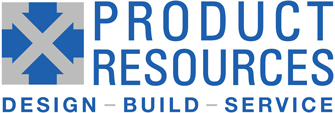QUICK ACCESS TO OUR OTHER SERVICE PAGES
Product Development
Product Design
Prototype Development
Pre-Manufacturing
Design for Manufacturing (DFM)
Manufacturing Documentation
Pilot Production
Regulatory Compliance
Manufacturing
Supply Chain Management
Product Assembly
Product Testing & Calibration
Post-Manufacturing
Product Delivery
Product Support
Sustaining Engineering
Contract Manufacturing Services
Prototype Development
Prototype Development is the next step in the product design process.
As a contract manufacturer, Product Resources uses different types of prototypes at different stages in the process.
Early in the process, our engineers will test out basic functionality to be sure the product can work as expected. Often, multiple prototypes are used to test different functionalities.
Later in the process, we will develop more finished prototypes that will more closely reflect the “look and feel” of the finished product.
What is a Prototype?
A prototype is a manufacturing tool to be used for experimentation and presentation.
For experimentation purposes, a prototype is developed to allow engineers to test different functionalities of the product. These can be very rough prototypes that are only seen by the engineering team. But they will help determine if certain functions can be achieved with the planned design.
For presentation purposes, a prototype is developed to show to potential customers, sales teams, senior management and investors to give everyone a clear idea of what is being built. These prototypes are often more finished.
Product Resources develops prototypes for different stages of the manufacturing process.
Alpha Prototype
An Alpha Prototype, often called a proof-of-concept model, is designed to test the fundamental technologies of the product – especially the more difficult technologies that come with significant risk.
The need for one or more Alpha prototypes is determined by first evaluating the risk of proceeding with the manufacturing using the existing design. without demonstrating the riskiest parts of the product first.
An alpha prototype is typically developed ad hoc by the engineering team from 3D printed parts and evaluation electronics, typically mounted on a wood base and hand wired.
Beta Prototype
A Beta Prototype is the first prototype which is a true representation of the entire product. It may be lacking packaging or maybe the color is not final, but it should be able to be used to test the design to the design specifications and the PRD.
Ideally, the design and materials are close enough to the final product design that any regulatory testing can be done on the product with little risk that there will be changes when the product is released to manufacturing.
The Role of 3D Printing
The evolution of 3D printing has dramatically changed the way prototypes are developed and, in some cases, the way products are manufactured.
There is no question 3D printing is faster and cheaper, but it’s not always the right solution.
The key is knowing when and how to use 3D printing and when to avoid it.

